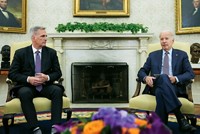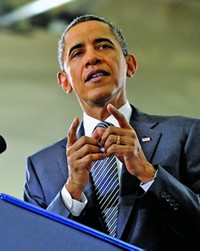Advertisement
Grab your lab coat. Let's get started
Welcome!
Welcome!
Create an account below to get 6 C&EN articles per month, receive newsletters and more - all free.
It seems this is your first time logging in online. Please enter the following information to continue.
As an ACS member you automatically get access to this site. All we need is few more details to create your reading experience.
Not you? Sign in with a different account.
Not you? Sign in with a different account.
ERROR 1
ERROR 1
ERROR 2
ERROR 2
ERROR 2
ERROR 2
ERROR 2
Password and Confirm password must match.
If you have an ACS member number, please enter it here so we can link this account to your membership. (optional)
ERROR 2
ACS values your privacy. By submitting your information, you are gaining access to C&EN and subscribing to our weekly newsletter. We use the information you provide to make your reading experience better, and we will never sell your data to third party members.
Policy
Brighter Times For Basic Science Research
Proposal to increase support for physical sciences basic research and education is cheered
by Susan R. Morrissey
March 6, 2006
| A version of this story appeared in
Volume 84, Issue 10

Assessing U.S. leadership in science and technology has been the focus of many reports and meetings over the years. Although concerns over the nation's future as the leader in this area have been growing in the science and technology community, it wasn't until this year that bolstering U.S. science and technology made its way into the public mainstream.
The boost came on Jan. 31 during the presidential State of the Union address. In his address, President George W. Bush noted that to maintain a strong economy, the U.S. must remain a global leader in science and technology. To that end, he rolled out the American Competitiveness Initiative (ACI), which is a blueprint to increase support for basic research and education in the physical sciences.
"Our greatest advantage in the world has always been our educated, hardworking, ambitious people-and we're going to keep that edge," President Bush said in his address. "Tonight, I announce the American Competitiveness Initiative to encourage innovation throughout our country and to give our nation's children a firm grounding in math and science."
The proposed 10-year, $136 billion initiative will reverse the trend of poor funding for physical sciences. Specifically, ACI will put the federal agencies that focus on physical sciences research-namely the National Science Foundation, the Department of Energy's Office of Science, and the Department of Commerce's National Institute of Standards & Technology-on a track to double their budgets over the next decade.
"It's notable that the Administration has been until now very reluctant to make long-term commitments or even long-term projections," says Kei Koizumi, director of the research and development budget and policy program at the American Association for the Advancement of Science. He adds, however, that he is cautious about reading too much into the initiative because money has been put on the table only for fiscal 2007.
As Koizumi notes, the President's 2007 budget request provides support to get ACI started. All told for 2007, ACI commits $5.9 billion to increasing R&D funding, strengthening education, and encouraging private-sector innovation. The investment consists of $4.6 billion in R&D tax incentives and $1.3 billion in new federal funding to support increases at the three targeted agencies as well as general physical science research and education programs at other agencies such as the Departments of Defense and Education. ACI is not intended to spark the creation of entirely new government programs; instead, it is intended to increase fundamental research capacity.
This initiative will translate into big gains for the three targeted agencies. For NSF, the President's budget request provides $6.0 billion, a nearly 8% increase from the 2006 budget level. For DOE's Office of Science, the proposed 2007 budget is $4.1 billion, representing a growth of 13.9% from this fiscal year. And for the lab research and construction accounts at NIST (NIST core), the 2007 budget is set at $536 million, which is up nearly 24% from the 2006 level after earmarked funds are removed. (Earmarked funds are funds added to an agency's budget by Congress for specific projects not included in the presidential budget request.)
The increased funds at these agencies will be used to support grants, facilities, and people. For example, the additional funds at NSF are expected to make possible 500 more research grants and support 6,400 more scientists, students, postdocs, and technicians; at DOE's Office of Science, the number of researchers supported will grow by 2,600, and several new tools and facilities will be funded. Researchers supported by NIST core will grow by 600, thanks to ACI.
The 2007 budget proposal also tags $380 million to improve K-12 math, science, and technology education. Activities for this part of the initiative will build on the No Child Left Behind Act and will include some new and expanded programs to improve both curriculum and teacher quality.
Another important element of ACI is making the research and experimentation federal tax credit permanent. Currently, the tax credit is legislated through temporary extensions. But making the tax credit permanent, the literature supporting ACI argues, would "enable companies to have certainty in their tax planning and therefore be bold in their R&D investment strategy." On the basis of the Administration's projections, making the tax credit permanent would cost an estimated $86.4 billion over the 10-year initiative.
At a recent congressional hearing held by the House Science Committee on the proposed 2007 budget, committee members expressed appreciation for and excitement about the requested growth of support by the Administration for physical sciences under ACI.
"For a long time, many of us have been calling for a renewed emphasis on research in the physical sciences, a commitment that would be demonstrated not with rhetorical feints but with genuine investments," said Science Committee Chairman Sherwood L. Boehlert (R-N.Y.), adding that the 2007 budget request supporting ACI provides such a commitment. Noting that it's now up to Congress to follow through by passing the budget, he explained at the hearing, "we will pass and enact whatever authorizing legislation will help make the proposed funding a reality both this year and in years to come and whatever legislation will help ensure that any additional funds are spent as wisely as possible."
With a number of competitiveness-related bills already introduced in the House and Senate, Boehlert noted that his committee will look at the strengths of all of them and work on developing amalgamated legislation this spring that targets a few key ideas and programs. "I don't want to pass bills that are laundry lists of new or duplicate programs that will never come into being," he said.
Representatives from NSF, DOE, and Commerce all testified about how their agencies planned to invest the proposed ACI funding increases. They shared their excitement over the President's support of research and education in the physical sciences.
"ACI is a brilliant stroke of publicity," said hearing witness John H. Marburger III, director of the Office of Science & Technology Policy and science adviser to the President. He and the other witnesses noted the importance of the President's discussing science and engineering to raising the public's interest in these areas, which are essential to the U.S.'s future leadership. "We are on our way to a new era of awareness," he added.
Several members of Congress, however, expressed concern at the hearing that science outside of ACI is being cut to offset the initiative's increases. Echoing this point, Koizumi tells C&EN, "The proposed budget would cut physical science research at the Department of Defense and the National Aeronautics & Space Administration. So even within the narrowly defined physical sciences, it ends up being less positive than it might first appear."
Another concern raised at the hearing as well as by other interested parties is whether the funding for education programs is sufficient. The House committee members expressed almost unanimous apprehension with the proposed budget cuts to education programs at NSF, saying these cuts are inconsistent with ACI's goals.
American Chemical Society President E. Ann Nalley agrees with the Congress members and tells C&EN that the "next big step is getting more support for science education." On behalf of ACS, Nalley wrote a letter to the President in January encouraging him to speak on competitiveness and the role of physical sciences in his State of the Union address (C&EN, Feb. 6, page 7). She was pleased when she heard that happen.
"ACI is a great step forward," Nalley says, adding that the initiative gets the federal government to recognize that to be globally competitive, the U.S. has to have more funding for science, technology, engineering, and mathematics education. She explains that the U.S. is in a critical state in terms of science education and that drastic steps need to be taken to secure future success.
"We have to continue to really tell our story well in order to convince not only Congress but also the general public that support for physical science research and education is needed," Nalley says. Because of the long-term nature of this initiative, scientists and other advocates must continue to get the message out to ensure that future funding remains on track after this initial year. "We have a great challenge ahead of us," she points out.
The immediate challenge, however, will be to encourage Congress to pass the 2007 budget request, Nalley and others note. The issue seems to have bipartisan and bicameral support, but under the constraints of time and limited budget dollars, nothing is sure in Congress this year.
"We're not going to declare victory and go home" just because the President introduced ACI, Boehlert said at the hearing. Instead, he and others in Congress have committed themselves to seeing that the funding to support ACI is passed. "We need to think of it in this way: We've won the battle, now it's time to win the war," he said.







Join the conversation
Contact the reporter
Submit a Letter to the Editor for publication
Engage with us on Twitter